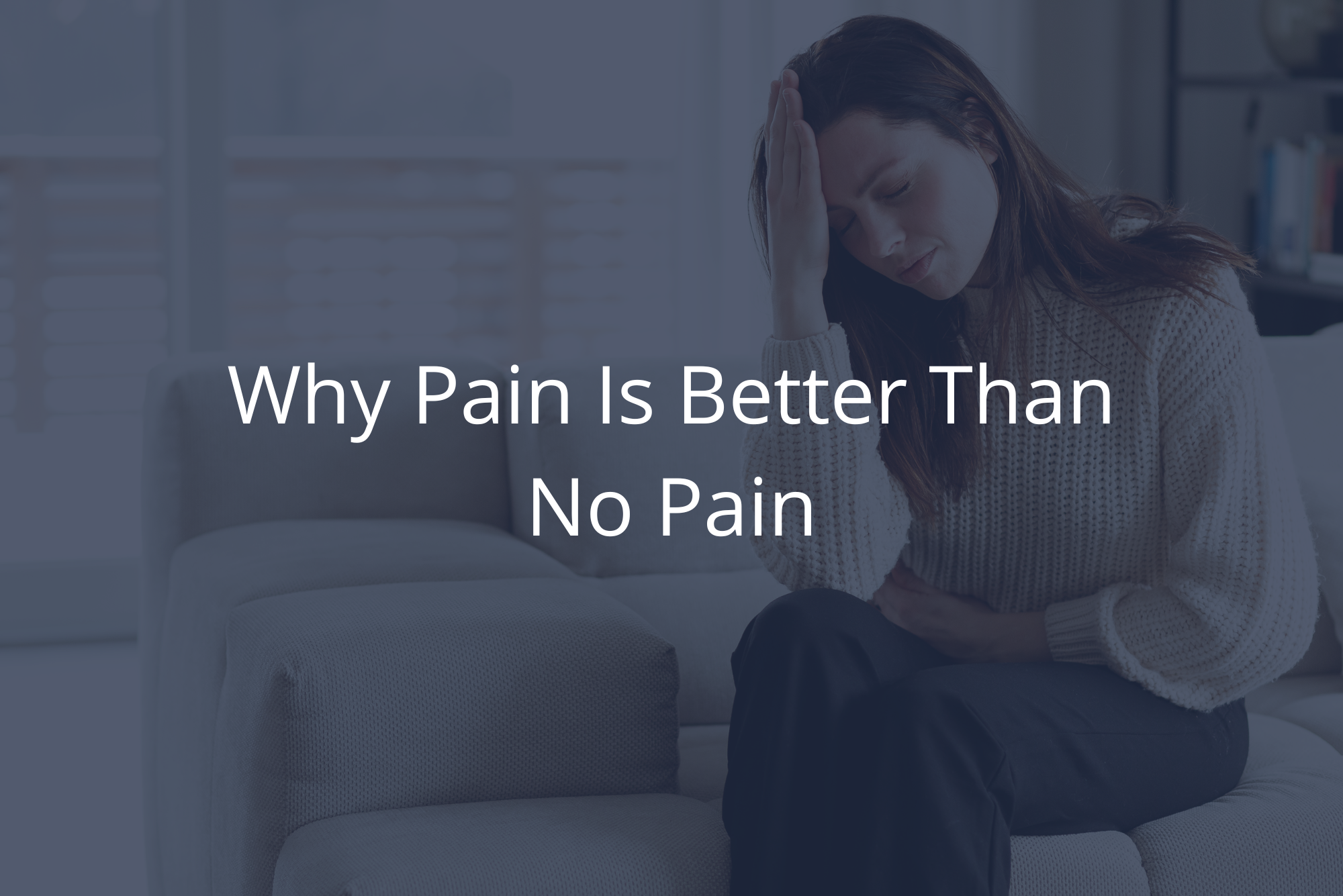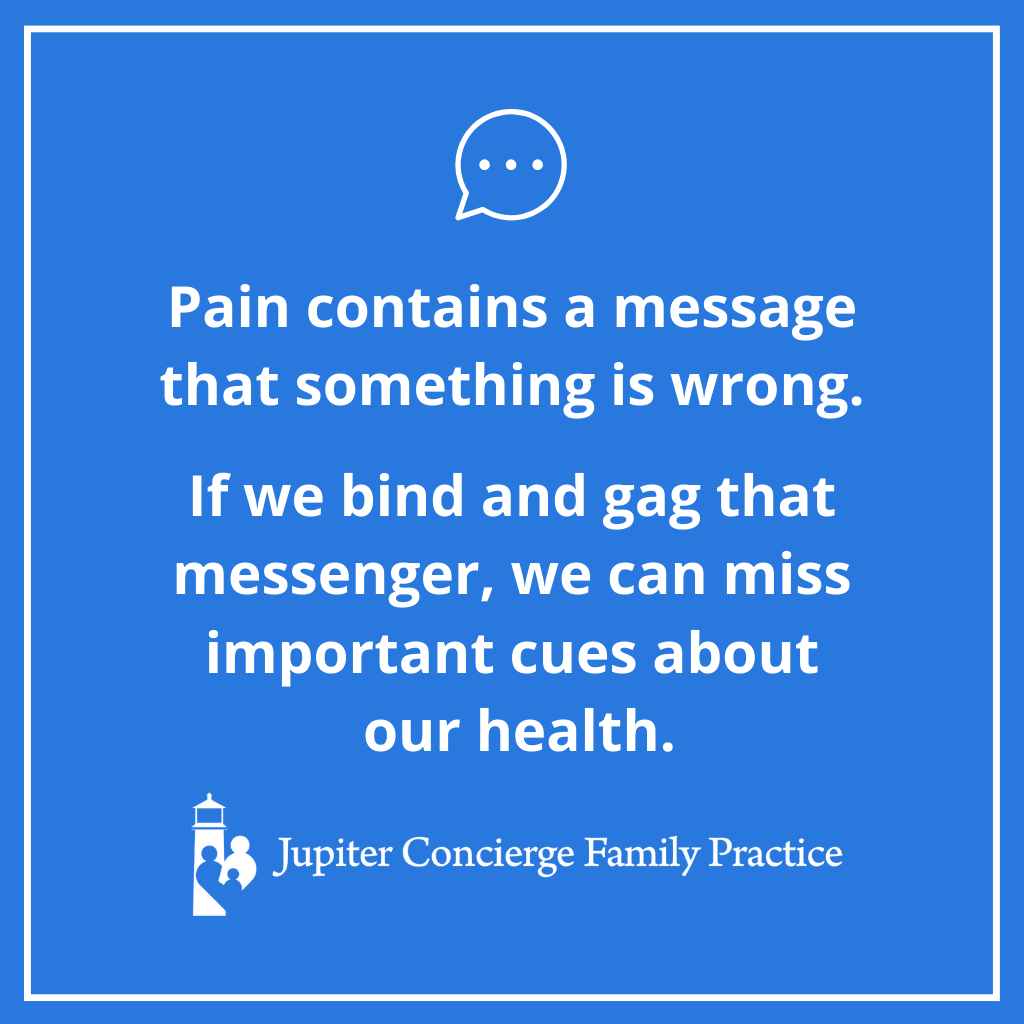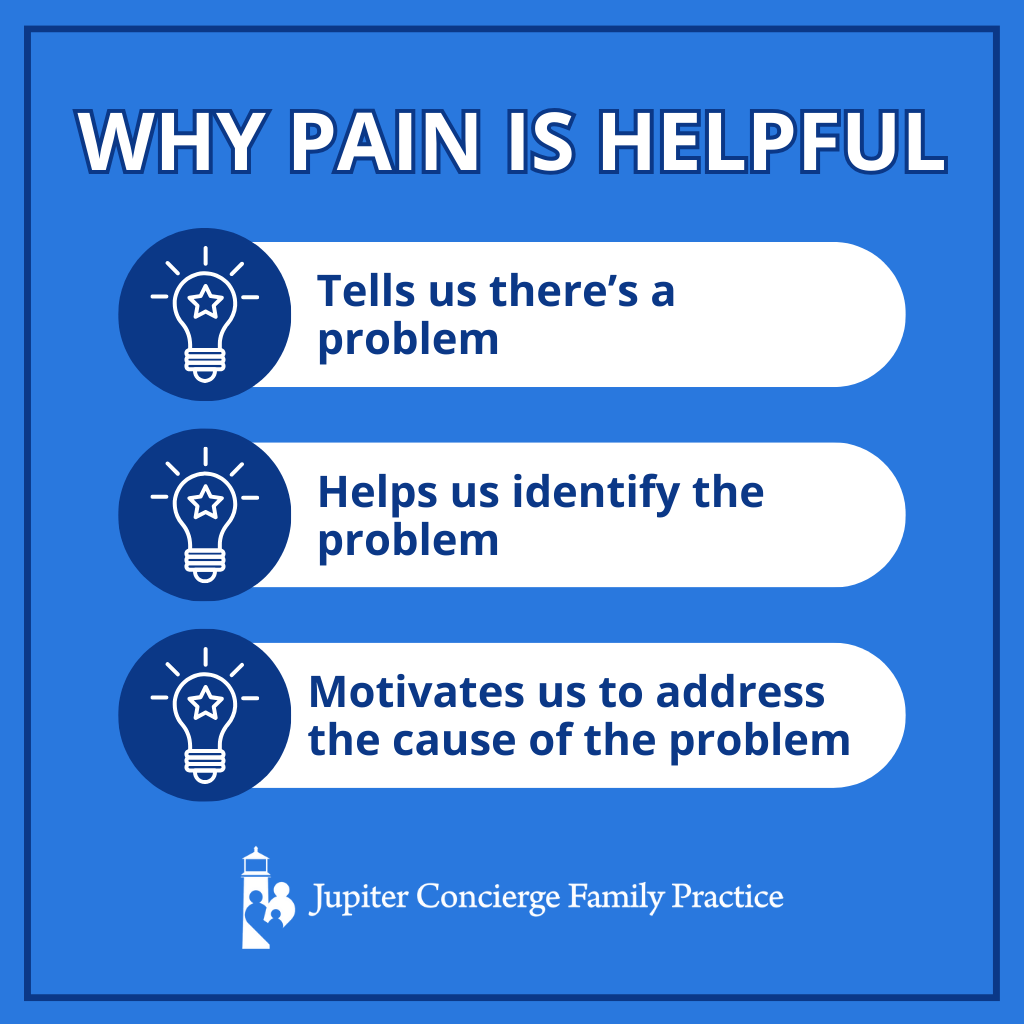
Nobody revels in pain. For most modern Americans, running away from pain is second nature, instinctual, and culturally reinforced. Pain is uncomfortable and unenjoyable, so we avoid it. Billion-dollar industries exist to help us avoid, numb, and/or be distracted from our pain.
Today, I want to reframe the way we think about pain.
Yes, pain is unpleasant. But pain has a purpose. It’s our body’s way of sending us valuable information so we can rectify a problem. If we consistently mask our pain, we too often end up ignoring those biological signals.
Of course, I’m not saying pain relief is never appropriate. But when is it important to listen more closely to our pain, and when are pain relievers a good choice? Let’s dive in.
Don’t Muffle the Messenger
Pain contains a message that something is wrong. If we bind and gag that messenger, we can miss important cues about our health. Not listening to pain can result in an eventual worsening of pain and a worsening of the cause behind it.
Pain is sensed in the brain, and it’s different for different people. Whether due to biology, cultural perception, or training, some people register pain less than others. This isn’t good or bad. It just is.
Instead of guilting ourselves (or bragging about!) our individual perception of pain, it’s more productive for us to spend time understanding the underlying reason for our pain.
When pain shows up with its messages, our best response is to listen.
The Perils of a Pain-Free Problem
Let’s look at a couple of examples of pain’s utility — and the problems that can arise without it.
How Pain Helps
When we toss and turn at night, our bodies are attempting to relieve pressure on an area of discomfort. Perhaps your back or neck is in a position that causes strain. Moving in response to that discomfort provides relief, prevents you from harming yourself, and allows you to continue slumbering.
Heartburn is another form of pain sent to alert you to internal problems. However, heartburn is so ubiquitous in the American consciousness that many simply accept it and treat the symptoms. But covering up the pain doesn’t address the cause.
For instance, heartburn can signal the existence of a stomach ulcer, a potentially serious condition. Left untreated, the ulcer can progress until it becomes life-threatening.
Without pain, we would be clueless about potentially lethal conditions unfolding right under our noses. Pain shows up to protect or inform us — unless by some misfortune or dysfunction, it doesn’t.
How a Lack of Pain Endangers
Imagine the discomfort you feel when a pebble makes its way into your shoe. You might bear it for a little while, but eventually you stop and remove the pebble for a pain-free walk. Your discomfort warned you of the danger to your foot, allowing you to remove it before any true harm occurred.
Now imagine you don’t feel the pebble. You never get a warning signal, and you keep walking, perhaps for a long time. That pebble grinds again and again into your foot, eventually causing an ulcer — which you still don’t feel and might not treat right away.
This may sound far-fetched, but it’s the type of pain-free problem that befalls people with diabetic neuropathy (a loss of feeling in their feet due to diabetes). Their nerves no longer communicate pain signals properly, interfering with the body’s ability to report danger.
Other times, a serious health event may not cause any associated pain. Take, for example, the silent heart attack. It’s “silent” because few or none of the expected symptoms, such as chest pain, occur. These are lethal, pain-free cardiac disasters.
With this change in view, though we don’t enjoy pain, we can appreciate and respect it.
When to Tame the Pain
So, given that pain sends a meaningful message, when is a good time to manage it with pharmaceutical interventions? The main takeaway here is to understand — and appropriately respond to — what the pain is telling you.
Sometimes, pain is a temporary issue where the underlying problem will improve on its own. But if we use painkillers to mask our pain instead of addressing the core issue, we’re headed for disaster.
For example, let’s say you pull your hamstring. You take an NSAID, which helps take the edge off the pain, but you don’t just continue to exercise as usual. You modify your routine to let the muscle heal and consult your physician if it doesn’t improve.
Or, let’s say you go out one evening for pizza and a few beers. That night, you’re up with acid reflux, so you take an antacid and go back to sleep. Rather than using antacids to enable the same poor diet in the future, you avoid the pizza-beer combination and practice better eating habits.
Or, perhaps you experience burning with urination, so you take an over-the-counter numbing agent without treating the underlying infection, which continues to worsen. An untreated urinary tract infection can wreak havoc on the bladder, kidneys, and entire system. While it makes sense to numb the pain, it’s also critical to treat the source of the problem.
If you use pain medicine as a mask without resolving the underlying pathology, your suffering will worsen. You just won’t feel it.
Conclusion
Physicians are here to help you live a high-quality life, whatever that means to you. While we do help limit pain and suffering, we must also listen to your pain and uncover the message behind it. This is a way that functional medicine excels at meeting patients’ needs — by taking time with each patient to discover and treat the root of the problem.


